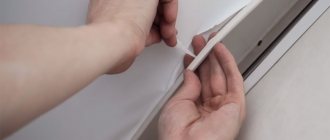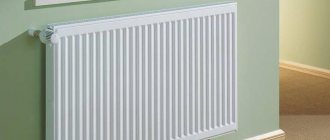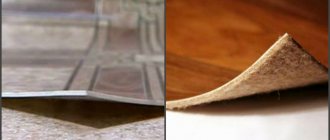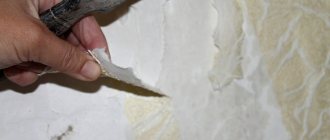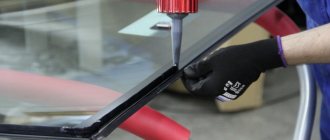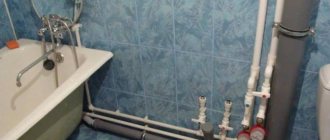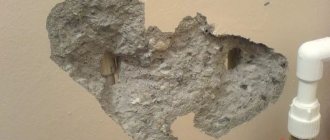It is no secret that a car radiator is one of the most important automotive parts in the vehicle engine cooling system. Its main purpose is the timely removal of heat from the internal combustion engine into the atmosphere. This occurs due to the circulation of liquid through channels, of which there are quite a lot in the car’s heat exchanger. Thus, the article describes relevant decisions for car owners on how to solder a car radiator, and what equipment should be prepared for these purposes.
- Car radiator repair methods
- How to seal a car radiator?
- Assessing the extent of radiator damage
- Internal radiator repair using chemicals
- How to solder plastic car radiator
- Surface preparation
- Preparing the adhesive mixture
- Cold welding
- Final stage
- DIY aluminum car radiator repair
- Security measures
- conclusions
Every driver should understand that the key factor for the correct functioning of the cooling system is its tightness. This means that even the smallest and most unnoticeable crack will completely disable it. Before working on soldering the part, it is important to study the process of repairing an engine cooling radiator with your own hands, and also determine which glue should be used in each specific case.
Causes of damage
There are not many reasons that cause problems with radiators. All of them can be divided into two types. These are mechanical reasons and natural wear and tear, which contribute to various damages that compromise the integrity and tightness of the device. Even a small stone that accidentally flew out from under the wheels can cause a breakdown and leakage of the radiator.
But sometimes auto mechanics are faced with another factor - head-on collisions with other cars. Even a minor blow to the bumper is enough to cause a breakdown. In addition, mechanical reasons include various repair work that is done by novice car enthusiasts. This often leads to damage to important parts and components of the device.
Corrosion processes, as well as natural wear and tear, are the second group of reasons that cause radiator leaks. It must be remembered that even minor scratches or chips can very quickly turn into a source of active corrosion. If you do not pay attention to this problem in time, then as a result of the destructive process, a hole will appear through which the coolant will flow out of the system. Minor cracks are quite difficult to detect. But if you get down to business seriously, then often all such damage can still be found.
These are two groups of typical reasons that can provoke depressurization and damage to the heat exchanger and subsequently coolant leakage. In addition, there are also some troubles during operation that can cause improper circulation of antifreeze in the system.
Step-by-step launch instructions
At the start, it is not necessary to have legal permission to conduct business. If we are not talking about opening a full-fledged service, but about independent repairs, then you can do without an individual entrepreneur or LLC. Because the beginning of the journey never gives a large flow of clients, this will be an additional small income, but after a while, you can think about expanding. Then official documents will be required.
- Search for premises. As already mentioned, the repair site must have high ceilings so that a KAMAZ can be driven in. Very often, it is this transport that requires such services, because the modern technology for manufacturing this engine part does not provide for future repairs. If you have the means to rent a box for several cars, then you can spend the money. The radiator will be removed and repaired indoors; it must be taken into account that there must be enough space for the vehicle itself. Therefore, an area of 50 square meters can be considered initial.
- Equipment.
- Search for clients. Online advertising and a website will be of little use, so you need to post advertisements. If you wish, you can hire a couple of workers who will perform the assigned tasks. But these are unnecessary expenses.
How to seal plastic parts of a car radiator
Let's take a closer look at the adhesive method for repairing a damaged radiator using the example of using two-component industrial glue from Hosch.
To seal the radiator tank, you should prepare the following materials and tools:
- powder welding granulate and liquid component of welding adhesive;
- sandpaper;
- acetone for degreasing surfaces;
- gloves;
- cotton buds.
Stages of work:
- Preparation . Both surfaces to be bonded should be cleaned of grease and other contaminants. If traces of other glue remain on the parts, they must be completely removed. In most cases, regular acetone will do for cleaning;
- Applying glue. A minimal amount of welding adhesive is applied directly to the crack. To fill the void or in the absence of fragments of the body, the powder component of the glue is sprinkled onto the liquid base. If it is necessary to restore a large depression, gluing is recommended to be done in several stages (several layers are applied sequentially with an interval of 10 minutes). After the gap is filled with dry granulate, it must be evenly saturated with the liquid component.
- Seam processing. 10-15 minutes after completion of the work, you can begin mechanical processing of the seam using a grinding machine or fine-grained sandpaper to give the seam an aesthetic appearance.
VIDEO INSTRUCTION
Instructions - how to solder plastic parts of a car cooling radiator
To solder (weld) a plastic radiator, you should prepare the following materials and tools:
- A special construction hair dryer for heating the soldering area;
- Soldering iron with a sharp tip and precise temperature control;
- Solder for plastic - special welding rods. The markings on them must match the markings on the radiator housing. As a rule, this is “PA” - polyamide (nylon) or “PP” - polypropylene. Instead of purchased welding rods, you can use pre-prepared strips cut from a similar plastic tank;
- Acetone.
Work order:
- Degrease the repair area with acetone;
- While the soldering iron is heating up, heat the joint with a hair dryer;
- We connect the seam and gradually run a heated soldering iron along it, forming a groove equal in width to the thickness of the welding rod;
- We apply a welding rod and, heating it with a soldering iron, place it in the groove of the seam;
- We check the radiator for leaks, and then install it on the car.
The welding temperature (heating of the soldering iron) is selected in accordance with the brand of plastic. For PP this is about 250 degrees.
Application of glue
Only two-component adhesive mixtures are suitable for repairing a plastic radiator. They cope well with situations where the crack in the radiator is large enough or it is not possible to connect the parts of the case due to a lack of small fragments. If a small crack is being repaired, simply mix the glue components and apply it to the crack in two layers.
In some cases, a crack appears in a hard-to-reach place. In this case, the sealant is applied along the entire length of the radiator Source Chebo.pro
Selecting repair methods and adhesives
There are several ways to restore the integrity and tightness of the cooling radiator:
- Soldering. The body elements of modern car radiators, made of heat-resistant plastic, can be easily soldered using a conventional soldering iron (we will look at this process in more detail below).
- Cold welding. This is the fastest way to join plastic parts without heating. A special plastic mass, which includes polymer resins, metal filler and chemical additives, connects the bonded surfaces, forming a heat-resistant seam.
This process does not require special equipment, but such repairs cannot be called durable.
Due to the low adhesion of plastic, cold welding holds very weakly. This method allows you to only temporarily solve the problem (for example, to get to the nearest car service center).
Application of glue. If the damage is minor, special glue will help restore the seal of the case.
The following compositions have proven themselves to be excellent:
Two-component adhesive 3M DP8005 is a specialized acrylic-based composition designed for gluing difficult-to-glue plastics, polyethylene, and polypropylene.
Perfect if you need to seal a radiator crack. The adhesive joint formed by DP8005 adhesive from the 3M brand is resistant to aggressive solutions and high temperatures.
The only drawback of this glue is its high price (1300-1500 rubles per 38 gram package).
Adhesive welding for plastics Hosch. This two-component industrial adhesive effectively repairs cracks and other damage in any plastic products.
The adhesive joint can withstand high and low temperatures, as well as pressure up to 12 atmospheres, so it can be used to glue a plastic radiator without any problems.
Often the joint is stronger than the plastic being glued together. The average cost of a set of two complementary components is 1500-1700 rubles.
Repairing a copper radiator
To solder an engine cooling radiator made of copper, you will need the following tools and tools:
- powerful soldering iron or gas torch;
- solder;
- soldering flux;
- pliers;
- sandpaper.
First, you need to dry the radiator, especially if you checked it by immersing it in water. Next, the damaged area should be thoroughly cleaned with sandpaper. If there are slats on it, they need to be removed locally. After this, the soldering area is treated with flux and dried again.
You can solder the cooling radiator using either a gas torch or a soldering iron. In the first case, solder is applied in place and heated with a torch until it melts and fills the crack. When using a soldering iron as a heating tool, make sure that it has sufficient power.
If the solder does not adhere to the surface or lags behind, it is necessary to repeat the stripping and fluxing process. You can check the repaired radiator using the method described above.
How to fix a leak in a radiator with sealant
The sealant is a special composition for sealing cracks and holes in the cooling system and in particular in the radiator.
There are several types of sealing agents:
- Powder. We fill the radiator when a coolant leak occurs. The simplest and most popular option among owners of domestically produced cars is mustard. Some car enthusiasts even use tobacco and other equally exotic substances for these purposes.
- Advantages. The advantages of dry products include low cost and the ability to eliminate small defects (up to 1 mm).
- Flaws. There is also a significant drawback, which is that not only leakage points are clogged, but also the radiator channels in the interior cooling and heating system.
- Liquid preparations. Preparations of this type are based on polymers with the addition of small metal particles. As a rule, such products are used to eliminate leaks in the engine block, but also partially in radiators. The operating principle is as follows: polymers cling to small roughnesses and sharp edges and envelop them.
- Advantages. The advantages of this option include the fact that the sealant is constantly present in the coolant and when it is replaced, it is removed from the cooling system.
- Flaw. Only small holes (no more than 1 mm) can be sealed with a polymer preparation;
- Modern polymer-type products. Products of this type contain special fibers. A striking example of such a substance is the sealant for radiators LAVR STOP LEAK. Thanks to the fibers, the adhesion of the particles of the product between themselves and the edges of cracks improves.
- Advantages. The main advantage of this option is that in a few minutes you can seal a hole up to 2 mm.
- Flaws. High price.
Sealant for car radiator - application
The main mistake of most car enthusiasts is that they do not know the main function of the seal. And it is simple - eliminating coolant leaks during temporary use. Therefore, it is recommended to use a sealant only in cases where it is not possible to eliminate the leak in stationary conditions or in the garage.
If a sealant was used to eliminate the cause of the leak, then, if possible, drain the coolant, flush the system and carry out a full repair of the radiator.
Driver actions when using sealing agents:
- A temperature sensor can indicate a leak from the radiator while driving. If the car is parked, then a puddle of coolant can tell us that it is necessary to check its level.
- If such a problem does arise, then turn off the engine, wait until the coolant cools down and proceed to inspect the damage. If the liquid still continues to flow, install a container under this place to collect it.
- Remember! Do not open the radiator cap of a car while the engine is running or hot, as this can cause serious burns.
- If you have a powder or liquid product on hand, then place it in the radiator according to the instructions.
Next, we start the engine for a few minutes, turn it off, and after a while we check again for leaks with the unit running. If the leak is small and the sealant was used in accordance with its instructions, then the coolant should no longer leak. In cases where the defect could not be eliminated, this may indicate to us that the hole is large. In this case, soldering is no longer necessary.
How to choose the right sealant?
To make the choice easier, a summary table with two characteristics will help: the time of clogging of holes of different diameters and the level of deposits. To evaluate the last parameter, we used the mass of the thermostat before and after applying the additive. Such testing of sealants was carried out at the Department of Internal Combustion Engines of St. Petersburg Polytechnic University.
Table
The table shows that sealants cope with microcracks successfully, even large holes are blocked within 2-10 minutes.
Brief history of appearance
Radiators appeared much earlier than the first industrial sealants.
Therefore, even 20 years ago, drivers did not even think to be interested in which special sealant for the cooling system of a car engine is better, since there was no choice. Before the advent of these products, drivers had to look for other ways to urgently stop an antifreeze leak. If this is not done, the engine will suffer. Therefore, it was quite logical to sacrifice a less valuable element, that is, the radiator.
It’s difficult to find the original source, but one day a motorist came up with the idea of pouring mustard powder into the radiator. It is unknown what guided him in this, but his idea turned out to be effective. We managed to plug the holes for a while, add water and get to the garage for a full repair on our own.
It is reliably known that dry mustard was used by Soviet troops during the war in Afghanistan. After adding powder and adding water, military wheeled vehicles could cover another 300-500 kilometers of difficult travel under their own power. Of course, at the end point there was no talk of further movement. But changing a radiator is easier and cheaper than abandoning your equipment and ending up in enemy territory without transport. Plus, if the cooling system was empty, the engine would break down much earlier than 300-500 km.
Having such experience and knowledge, specialists in the field of auto chemicals began to develop special substances to combat leaks. They were called sealants. But even the manufacturers say that these are products for emergency situations and serve solely as a temporary measure. They give you the opportunity to get on your own to a place where a full-fledged repair will already be carried out.
Types of leaks and ways to eliminate them
There are several main types of leaks:
- crack in the body of a sectional, tubular or panel radiator;
- violation of the tightness of the seam connecting the sections of the battery;
- leakage in the radiator piping area;
- leakage of pipes.
Leak on radiator piping
Using a clamp and rubber gasket
Before you fix a leak in the heating battery. formed at the connection point of the coolant supply or return, you need to prepare some tools, these are:
- aluminum clamp;
- rubber gasket;
- wire;
- pliers.
Repairing leaks using FUM tape
According to OKPD, individual heating system repairs can be carried out using a special FUM tape.
Violation of the tightness of a sectional, panel or tubular radiator
In most cases, a damaged radiator will need to be replaced.
Application of cold welding
Plate adhesive is able to eliminate any types of cracks and breakdowns and restore the tightness of the heating battery. The glue is resistant to moisture and high temperatures. Its use is considered one of the most reliable ways to eliminate leaks in a heating system and is often used as an emergency method during circuit accidents.
Pros and cons of using
Automotive radiator sealants have clear advantages, and the most important of them is the ability to get to a repair shop, keeping the engine from overheating. They are ideal as an emergency measure when calling a tow truck is not possible. There is no need to coat the radiator walls with sealants; they are simply poured into the system, which is very quick and convenient.
However, sealant is only a temporary solution. Any product clogs the system to varying degrees, reduces its efficiency, and reduces the service life of components. Therefore, it is necessary to flush the radiator as soon as possible to remove residual sealant and sediment. In any case, this is cheaper than replacing engine parts, which will have to be done after it overheats. Another disadvantage is the inability to repair too large holes: in some cases, mechanical repairs have to be made immediately.
Removing cracks in the cylinder block and cylinder head
Engine blocks and heads consist of various metal alloys. Technologies that exist today often make it possible to restore damaged elements. Next, we will look at ways to fix the breakdown and answer the question of how to remove cracks in the cylinder block and repair cracks in the cylinder head. In some cases, you can repair cracks yourself.
One of the most widely used methods for eliminating cracks in the cylinder block and cylinder head is sealing defects in silumin and cast iron blocks using welding.
Welding can be either electric or “cold”. Cold welding means sealing cracks with various polymer-based materials. Almost all cracks can be welded using the first or second method, except for cracks in the area of the valve seat, cylinder walls, as well as those surfaces where the cylinder head and cylinder head adhere.
Sintec Coolant Stop Leak
Price: 134 rub.
Composition produced by the Russian manufacturer Sintec. One half-liter bottle of this product is designed for 20 liters of antifreeze.
The drug faithfully patches holes in the radiator, as well as other elements of the heating and cooling systems of the car. The composition is resistant to heat and does not harm parts made of plastic, rubber, or non-ferrous metals.
Advantages:
- does not clog the radiator;
- compatible with any automotive antifreeze based on ethylene glycol;
- when used correctly, seals even large holes in the radiator;
- not too high cost.
The only significant disadvantage of the Coolant Stop Leak composition is that it does not last long on parts.
What is the danger of a constant coolant leak?
If the cooling radiator is leaking, you need to know what to do or which specialists to contact to fix such a problem. Constant leakage can lead to negative and even dangerous situations:
- engine overheating and further failure;
- changing the configuration of the cooling system and violating the integrity of the material used as a gasket;
- engine jamming, which will entail costly and time-consuming repairs;
- thermal burns that can occur when a crack in the radiator ruptures and hot liquid flows out in a fountain.
Why is a radiator needed and why its leaks are dangerous? Now that we have figured out, it’s time to move on to the main issue - considering ways to eliminate leaks and return the cooling system to tightness.
This is interesting: Description, properties and application of BF brand adhesives (video)
In what cases are they used?
Car radiator leak
Sealing agents are used when small defects are detected in the cooling system. These could be cracks, holes, or leaks in the joints. Capable of stopping antifreeze leaks in the following places:
- on heater radiators;
- on tubes;
- at the junctions of the radiator and tank;
- on the radiator and heater tap pipes;
- on the seals of the pump and thermostat;
- in areas where the system is poorly soldered.
Assessing the extent of radiator damage
It is customary to install the radiator itself in the engine compartment, or rather in its front part. This is how it is possible to create the effect of blowing with a counter flow of air while the vehicle is moving. The disadvantage of a car heat exchanger is its fragility. This device is often called the most vulnerable part of any car.
Even if the slightest impact occurs, the likelihood of mechanical damage to the spare part in question is quite high. Heat exchangers whose water tanks are made of plastic break down especially often. Therefore, when deciding how to repair a radiator, you need to focus primarily on your capabilities. Carefully study all the methods presented above and try to figure out which method will be the most convenient and simplest from a practical point of view.
It is also important to first assess the extent of the damage. If it is strong enough, it is recommended to focus on direct soldering
This way you can deal with really large cracks that cannot be fixed with ordinary glue. If the crack is not the largest, cold welding type putty is quite suitable. Glue will be the optimal solution for restoring small cracks.
If you are not sure that you know how to seal a car’s cooling system, it is better to focus on repairing the system at a car service center. In addition, you won’t have to spend too much money on restoration work carried out by a mechanic, because the process itself is not considered difficult.
This is interesting: Unusual use of a glue gun - what can be made from hot glue
How to solder plastic car radiator
Soldering an engine cooling radiator is considered a fairly simple task. However, not everyone can cope with it due to insufficient knowledge of how to solder a car radiator on their own. Most car owners prefer to take their car to a service station.
If you are confident in your abilities, then first you should determine how to seal the plastic radiator. Next, let's look at step-by-step instructions that will help you make a truly high-quality and durable repair of the plastic parts of the part.
Surface preparation
Before gluing the plastic on the car radiator, you will need to thoroughly prepare the surface for this process. For this purpose, we will need to clean it from grease, dust and dirt. Lightly dampen a rag and very carefully wipe the areas of plastic around the resulting crack.
In order to achieve a better effect, it is recommended to use an alcohol solution. It is important that in no case should you overdo it. The fact is that too active mechanical impact on the damaged area or excessive pressure on it when cleaning can damage the heat exchanger even more.
Preparing the adhesive mixture
Now you need to worry about how to seal the crack on the car radiator. So, let's prepare the adhesive mixture. If you decide to use exclusively glue specially designed for such purposes, then its use will be as simple as possible.
A small amount of adhesive should be applied directly to the damaged area. When a part is missing a certain piece of the body or there is no gap between the two halves that are formed due to a crack, it is recommended to sprinkle the liquid base with the powder component of the glue.
So, if the crack itself is too deep or a sufficiently large part of the body is missing, gluing must be performed in several stages. You should apply glue to the damaged area two or three times, waiting until each layer is almost completely dry. When the resulting gap can be completely filled with dry gradulant, it is recommended to saturate it with a liquid composition. This way you can be completely confident that it will adhere perfectly to the surface of the spare part.
Cold welding
In addition, you can seal a car radiator using cold welding. Since it comes in the form of a fairly thick putty, it will be enough to apply it to the seam and wait until it cools completely. It is important that this putty must be applied in a neat and even layer so that the seam is of the highest quality.
Cold welding must be used as:
- the main method of restoring performance;
- an additional means of securing the result obtained by soldering or gluing.
A layer of cold welding applied on top of the glue layer will allow you to preserve the quality of the auto part repair for a long time and extend the service life of the part.
Final stage
When the glue has completely hardened and all the main working steps have been completed, you need to carry out final surface treatment. It is necessary to ensure that the resulting seam becomes neat and smooth. For such purposes, the soldering area will need to be treated with fine-grained sandpaper, and ideally with a grinding machine.
In this way, you will be able to get rid of all minor defects that will not have the best effect on the further operation of the product. After this treatment has been completed, install the heat exchanger back in its place.
How to seal a car radiator
Now let's talk about how to seal the radiator and what glue is best suited for this. Thus, one of the best options is considered to be the two-component adhesive 3M DP 8805. The basis of its composition is acrylic, which makes it possible to use the composition for working with difficult-to-glue materials:
- the main advantages of such glue are the ability to create a sufficiently strong and reliable seam that will not lose its original shape when exposed to high temperatures;
- The disadvantage is the rather high cost.
Special welding adhesives are also a good option. They are designed for quick and, most importantly, effective elimination of defects on plastic surfaces. Adhesive joints after such compositions withstand not only high but also low temperatures. In addition, they are not afraid of high atmospheric pressure.
To avoid making a mistake in your choice, we recommend purchasing the required adhesive from a certified automotive store.
Security measures
When repairing a car radiator, you should be extremely careful and follow certain safety measures. The heat exchanger itself must be disconnected. Drain all liquid completely.
If you have not previously had experience working with a soldering iron, it is better to entrust this task to professionals. In this case, you should at least practice on less important surfaces and parts of the car.
When working with cold welding or glue, it is important to use gloves to avoid damaging your hands. In addition, be sure to follow the instructions for using the glue. This way you can not only achieve the ideal effect of the repair, but also protect your hands from the harmful effects of adhesives.
conclusions
So, following the recommendations and advice in the article, determining what to seal a car radiator with will not be difficult. The main thing is to follow some safety measures and choose the best repair option. If you are not sure that you can cope with such a task on your own, it is better not to take risks and seek help from qualified auto mechanics.
Still have any questions? In this case, we recommend watching a video on how to repair a car radiator at home. We wish you good luck in your endeavor!
Radiator repair methods
- You can also use a gas torch for soldering.
To quickly eliminate leaks from broken radiator tubes. You can mute them. To do this, bend both torn edges of each tube and clamp them with pliers. This method is suitable if no more than 5 tubes are broken. Such repairs are justified if the radiator is aluminum and you cannot solder it.
- When the radiator is aluminum and its plastic tank is broken. If the length of the hole is not too different from its width, a rubber plug will help to seal the hole. You need to do it like this: A plug is cut out of rubber at least 1 cm thick in the shape of the hole. A hole with a diameter of about 5 mm is made in the center. An M6 screw is inserted into the hole, onto which the corresponding nut is screwed. The plug is inserted into the hole. The screw is tightened until the plug compressed by it and the nut, expanding, loses its mobility. After this, the plug will reliably plug the hole. You can add antifreeze. If the screw head or nut falls into the hole and the plug does not expand enough, place a washer under them. After adding antifreeze, an air lock usually forms in the system. It is removed by undocking the top point of the car's cooling system.
- If the copper radiator pipe has a crack near the tank.
Remember that when buying such compounds, you risk further harming the engine cooling system
Clean, degrease and solder it thoroughly by pouring a thick layer of solder on it. This type of repair is quite acceptable.
- When the plastic pipe has a crack near the tank. Order a turner to make a tube with an outer diameter equal to the inner diameter of the pipe, 3-4 cm long. Remove the piece of pipe from the tank, clean, degrease and dry it from the inside. Glue a tube made by a turner into it onto the liquid glass so that half of its length remains outside. Dry the structure and glue it into the radiator tank. This must be done with the same glue. It is better to strengthen the joint on top with a textile bandage on liquid glass.
You need to make an oil cooler taking into account what it is made of. Its repair begins with draining the oil from it. Cork is also made. You just need to make it from oil-resistant rubber, since other oil will quickly render it unusable. Before soldering, the oil radiator should be thoroughly rinsed inside and the oil removed from the outside. It’s better not to repair the oil radiator, but to buy a new one.
Liqui Moly
Declared manufacturer: Germany
Approximate price: 200 rub.
Metal-containing drug. The sediment after draining shone with sparkles of all colors. A clear leader in the speed of sealing holes, and the leaks, having stopped, never resumed. The level of residual deposits is average.
+ Best operating efficiency.
- Price.
1 place. Radiator sealant “BBF Super”
How to find a crack
The following methods are used to identify cracks:
- ultrasonic detection method;
- use of magnetically sensitive equipment;
- pneumatic crimping method;
- searching for cracks using hydraulic control;
In practice, crack detection in many car repair shops is carried out by pumping air or water into the faulty engine element. In the case of air, the part is additionally immersed in a bath and defects are found by bubbles. If water is pumped into the element, then the need for immersion is eliminated, since cracks are diagnosed by liquid seepage.
To determine the exact boundaries of the crack, a pair of magnets are attached to both sides of the split, and the space between the magnets is filled with special conductive filings. The presence of a crack will cause the magnetic field lines to break, causing sawdust to partially cluster on the crack surface. This method allows you to clearly identify a crack in the cylinder block or cylinder head.
Leak test
After repairing the damage, the radiator must be checked for leaks. Here's how it's done:
- All additional radiator pipes are carefully sealed (the plugs for them can be cut from a piece of rubber).
- Water is poured into the main pipe. So that the radiator is filled to the top.
- Next, the device should be placed on a dry surface and left there for 30–40 minutes. If after this time no water appears under the radiator, it is sealed and can be installed in the car.
A second test option is also possible, using air:
- You need to take a container into which the radiator can easily fit (a medium-sized basin is best for this).
- The container is filled with water.
- The radiator pipes are clogged with plugs. A regular car pump is connected to the main pipe (you can use an adapter for the connection, and if you don’t have one, the hose is simply wound to the pipe with electrical tape).
- Using a pump, excess pressure is created in the device.
Escaped air bubbles indicate that the radiator is not sealed. - The radiator inflated with air is placed in a basin of water. If no escaping air bubbles are visible anywhere, the device is sealed.
How to accurately determine the location of a radiator leak
Before you start repairing the radiator, you need to determine the nature and location of the malfunction itself. Almost all external malfunctions of the radiator (except for ordinary contamination) involve a violation of its tightness, which means there must be a coolant leak.
The intensity of liquid leakage from the radiator may vary, and at the initial stage it is not visually noticeable, but a rapid decrease in the liquid level in the tank is noticed almost immediately. After all, a decrease in the level of antifreeze or antifreeze leads to overheating of the engine, which is immediately signaled by a special temperature sensor on the driver’s instrument panel.
To accurately determine the location of a fluid leak, you can use two methods. In this case, you will need to completely drain the coolant from the radiator, and disconnect the radiator itself, remove it from the car and rinse thoroughly.
Also remove, empty and clean the radiator, but with all inlets plugged, completely immerse it in a suitable container of water. Air bubbles will be seen escaping from holes in damaged areas. If air does not come out, create excess pressure in the radiator using a pump or compressor.
What you need to know about the possibilities
The effect of such a sealant on the condition of the CO is not so catastrophic, but it should be understood that a deterioration in its performance in this case is inevitable. Therefore, if, when the coolant level drops critically, it is possible to evacuate the car, it is better to use it. A sealant is an extreme option when there are no other ways to get to civilization and are not expected.
The principle of action of such drugs is extremely simple: at the site of a coolant leak, it forms a blood clot, which reduces the throughput in this place to almost zero. But excess sealant somehow settles in the lower part of the pipes, tubes or radiator channels in the form of a gel-like coating, which also reduces their permeability.
It is the radiator tubes that suffer especially badly - their design includes special swirl spirals designed to improve coolant heat transfer - without this, the antifreeze would cool much worse. But this place is a kind of bottleneck - it is on the swirlers that most of the sealant accumulates, reducing the throughput of the radiator and the cooling system as a whole. So if you had to resort to using this product, then at home you will have to thoroughly flush the cooling system and replace the antifreeze.
Finally, before using a sealant for the engine cooling system, you need to know that such a repair additive cannot eliminate through-through damage to the radiator - it only temporarily restores coolant circulation, sooner or later the clot will come off or resolve, and the leak will resume. So flushing the system and replacing the antifreeze is not enough - you will have to look for the place of loss of tightness and eliminate the defect.
All this information will help those car owners who generally doubt the benefits of sealants as a means of temporarily eliminating leaks to obtain objective information. Of course, in the event of a serious rupture of the pipe or the formation of a large hole in the radiator, this remedy is unlikely to help, but with minor problems it will most likely cope “excellently”. Much depends on the correct use of the product; operating instructions are usually included in the package. True, although the range of sealants presented on the domestic car market is quite extensive, most drugs are characterized by almost identical algorithms for use, despite differences in composition.
In most cases, antifreeze leakage occurs unnoticed, but one of the obvious symptoms of the problem is an increase in engine temperature, which can be monitored on the dashboard. It’s even better to look at the expansion tank every time you check the oil level - this will help you identify the problem in time and take steps to fix it. By the way, the easiest way to determine the location of the leak is to examine the place where the car is parked for the presence of wet spots; they can also form on the cooling system components, so it would not be a bad idea to look into the engine compartment.
Soldering aluminum radiators
Don’t rush to take up the soldering iron - you can always do it in time. First you need to study the scale of the tragedy and choose the most appropriate repair option.
- you can simply pour solder into a place with a small defect;
- a breakdown with an impressive size will have to be covered with a patch and soldered along the entire circuit.
Next we will describe in detail how to solder the radiator. If you follow these instructions, even a person without relevant experience will definitely succeed.
We dismantle the device, drain the liquid from it, disconnect the pipes, bolts and remove the assembly. At the leak site, we remove dirt, clean off dust and dry it. We apply rosin to a dry and clean surface, but it is better to use soldering acid. For an aluminum radiator, it is important to use active flux or aluminum solder. This is due to the oxide film that forms instantly
It can disrupt the entire repair process. A leak may form on the tube - this situation is not uncommon. In this case, you will need to warm up the soldering area and remove the tube. Then soldering is carried out or the tube is replaced with a new one if the damage is large. It is not always possible to reach the tube so easily with a soldering iron. In this case, you will need to insert a heated rod into the damaged tube. The temperature will make the solder soft, allowing you to remove the tube without any problems.
Since we are talking about soldering radiators, it is worth giving advice on such repairs to copper and brass structures. To repair such parts, you need to use a special soldering iron that is designed to work with such materials. The power of such a soldering iron must exceed 250 W. The work is performed according to the following scheme:
- the surface is also cleaned and dried;
- the material warms up;
- rosin is applied as evenly as possible;
- Solder is also applied in an even layer.
What is the difficulty of soldering aluminum?
Aluminum is a very specific metal. Its peculiarity lies in its high chemical activity, manifested in the formation of a so-called oxide film on the surface. It appears instantly when pure metal comes into contact with air, reacting with oxygen. And it is precisely because of this that it is impossible to solder an aluminum cooling radiator in the usual way. This will require additional substances that contribute to:
- removing oxide film from the surface;
- reducing surface tension;
- protection from adverse factors affecting the soldering process;
- improved solder flow.
How to seal a leak in a heating pipe, radiator, between sections
The method for eliminating a leak in a heating system largely depends on the location where the leak appeared. The leak could be:
- on a single pipe;
- at the junction of pipes and radiators, pipes and fittings (adapters, tees, etc.);
- between battery sections;
- right on the radiator.
Depending on the scale of the disaster (what else can we call it?), the actions differ. If these are just the first signs - a few drops per hour or a very thin trickle - you can try to eliminate it yourself, using improvised or purchased means.
You can fix radiator and pipe leaks with your own hands. The main thing is that it flows lightly
If the flow is strong, the first thing for residents of high-rise buildings is to call an emergency team. The next step is common to everyone: turn off the coolant supply. There are several options:
- The radiator is leaking. At the same time, there are shut-off valves at its inlet and outlet. Then just close the taps. For owners of individual heating, everything is simple, but for subscribers of centralized heating there are several situations. The radiator is installed with a bypass, then when the device is turned off in your apartment, nothing happens to the common riser, the heating continues to work. No problems, just do the repairs in peace.
- There is no bypass. Then you need to either inform your neighbors and (or) the DEZ, Housing Office, etc. and then start fixing the problem.
We really don’t like to call emergency lights and often try to fix everything ourselves. There is a chance to fix the leak with your own hands if the leak is not “within the radius”. Then we'll try to localize the problem.
The difference between a new and used pipe is obvious
On the advisability of self-repair
The feasibility of repairing a radiator directly depends on the extent of its damage:
- if several small cracks are found in the device or a couple of ribs are deformed, then such a breakdown can be completely repaired without leaving the garage;
- and if fragments of the fan got into the radiator and only rags remained from the tubes with fins, it will not be possible to repair this on your own. Moreover, devices with such damage are not always sent for service. Typically, drivers simply buy new radiators and install them, saving time and money.
If the car owner nevertheless decides to use the services of a car service, then the cost of the work will vary within very wide limits, since it depends not only on the degree of damage, but also on the make of the car (repairing domestic radiators is cheaper, foreign ones are more expensive). The price range today is as follows:
- eliminating small cracks with glue or sealant - from 600 to 2000 rubles;
- soldering of broken tubes and complete restoration of deformed ribs - from 4,000 to 8,000 rubles.
StepUp SP9020
Price: 153 rub.
An American product that, judging by the description, is capable of neutralizing a hole along the antifreeze route in just a couple of minutes. The composition is suitable for both passenger cars and trucks. Radiators and heaters compatible with it can have any design, even flat-tubular.
SP9020 sealant hardens exclusively in the area of the hole, and this occurs due to the vigorous evaporation of individual components of the composition. Thus, the drug automatically blocks leaks where antifreeze passes.
Advantages:
- compatibility with all known antifreezes;
- the product does not harm the coolant;
- After adding the drug, replacing antifreeze is not required.

